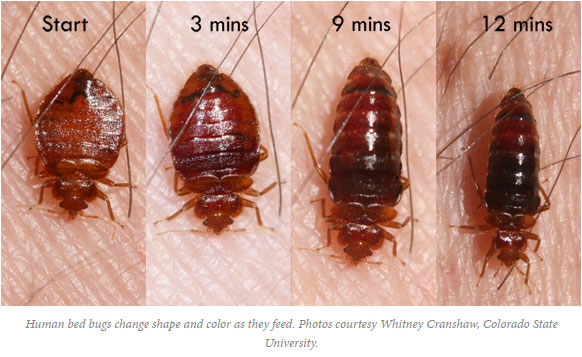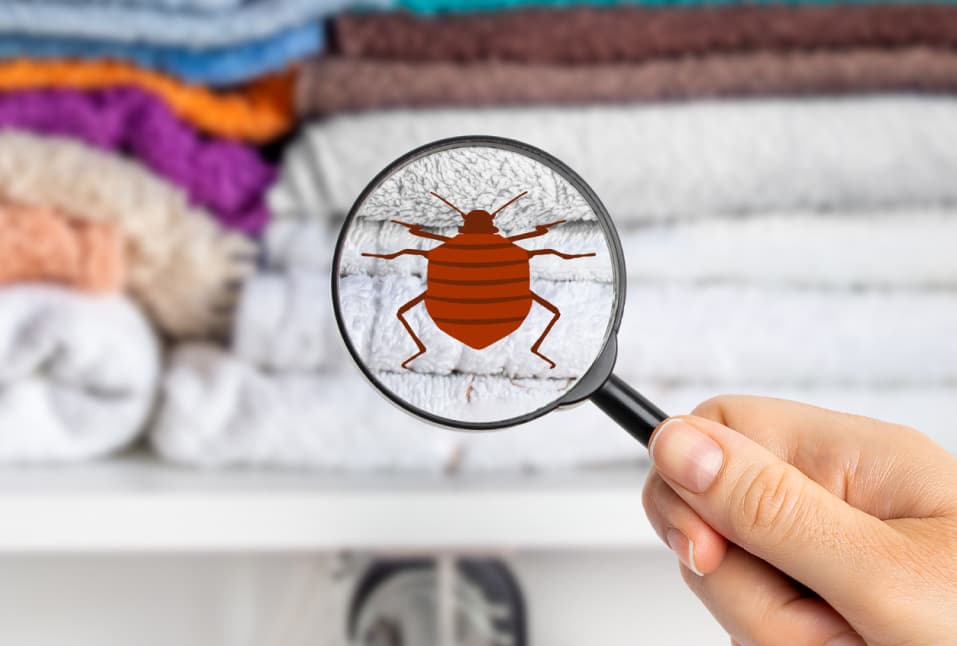Comprehensive Bed Bug Heat Treatment Services for Complete Elimination
Comprehensive Bed Bug Heat Treatment Services for Complete Elimination
Blog Article
Get Informed Concerning the Kinds of Parasite Control Approaches and Their Advantages for Home Owners
Recognizing the different parasite control techniques available to house owners is important for reliable insect monitoring. Property owners that are knowledgeable can make critical choices that not only address parasite issues yet also boost the total quality of their living atmosphere.
Chemical Pest Control Techniques
Chemical parasite control techniques are an essential component of incorporated bug monitoring techniques for property owners looking for effective options to pest infestations. These techniques entail the application of chemical materials developed to get rid of or hinder pests that endanger personal effects, wellness, and convenience. Common chemicals used include pesticides, fungicides, herbicides, and rodenticides, each customized to target details parasites.
The main benefit of chemical parasite control is its quick effectiveness; many formulations offer instant results, minimizing pest populaces substantially in a brief time. In addition, breakthroughs in chemical solutions have actually brought about items that are extra eco-friendly and have reduced poisoning degrees for non-target organisms when applied correctly.

Organic Parasite Control Techniques
All-natural parasite control methods have obtained prominence as house owners look for safer and much more lasting choices to traditional chemical techniques. Organic parasite control techniques use all-natural killers, bloodsuckers, or pathogens to manage bug populaces properly. This method is not only eco-friendly yet additionally minimizes the risk of damage to non-target types, consisting of valuable pests and wild animals.
One of the most common biological control methods involves introducing natural predators into the environment. For instance, ladybugs can be utilized to manage aphid populations, while nematodes target soil-dwelling insects like grubs. Furthermore, parasitoids-- organisms that survive on or within a host-- can be used to regulate details parasite varieties by laying eggs inside them, inevitably causing their death.
One more method is using biopesticides, which are derived from natural materials such as microorganisms, plants, or minerals (bed bug exterminator). These products can efficiently target pests while posing marginal threat to people and family pets. In general, biological insect control strategies give homeowners with a reliable ways of pest administration that straightens with ecological concepts, promoting a much healthier living atmosphere while lowering dependence on synthetic chemicals
Mechanical Parasite Control Methods
Mechanical parasite control approaches encompass a selection of approaches that physically prevent or get rid of pests without making use of chemicals. These strategies are especially advantageous for property owners looking for eco-friendly options while making sure the safety of their home.
One usual approach is using barriers, such as webs, traps, and displays, which prevent pests from entering homes or certain locations. For instance, installing window displays can efficiently maintain bugs out, while making use of physical obstacles around yards can discourage bigger bugs like deer or bunnies. Additionally, mechanical catches made for rats can capture and eliminate these parasites without the demand for poisonous materials.
One more effective strategy includes making use of brooms and vacuums to get rid of bugs straight from surface areas. Normal cleaning and upkeep can substantially reduce pest populaces by eliminating food resources and hiding spots. Employing gadgets like ultrasonic bug repellents can discourage numerous insects via sound waves that are undesirable to them however faint to humans.
Social Bug Control Practices
Cultural pest control techniques concentrate on changing the setting and monitoring strategies to develop problems that are less for pest problems. These techniques are essential in preserving a balanced environment and decreasing the dependence on chemical treatments. By modifying farming techniques, property owners can effectively discourage parasites while promoting plant health.
One typical method includes crop turning, which interferes with the life cycles of insects by altering the kinds of plants expanded in a specific location (bed bug exterminator). This not just minimizes pest populaces but also improves dirt wellness. Furthermore, intercropping-- growing diverse crops in proximity-- can puzzle bugs and reduce their ability to locate their recommended host plants
Water monitoring is an additional crucial facet of cultural methods. Correct irrigation techniques can stop standing water, which works as a reproduction ground for insects and various other insects. Keeping tidiness in and around the home, such as frequently removing debris and food waste, can significantly reduce bug attraction.
Including these social methods right into a thorough bug administration strategy enables house owners to produce an environment that normally deters pests, thereby boosting the efficiency of other control approaches while advertising sustainable gardening and go to my site landscaping.

Integrated Pest Monitoring Approaches
Integrated Bug Management Read More Here (IPM) stands for a holistic method that integrates different methods to effectively take care of insect populaces while reducing environmental influence. This method integrates organic, cultural, physical, and chemical methods to accomplish lasting bug control. By analyzing pest populations and their all-natural enemies, IPM stresses tracking and determining insects before applying control procedures.
Among the core concepts of IPM is the use of limits, which develop the level of insect activity that requires intervention. This ensures that treatments are applied just when necessary, reducing the dependence on chemical pesticides. Organic control methods, such as introducing all-natural predators or parasites, operate in combination with social methods like crop turning and environment adjustment to disrupt pest life process.
Furthermore, IPM motivates making use of least-toxic chemical choices when intervention is necessary, focusing on products that present marginal threat to non-target organisms and the setting. For house owners, taking on IPM approaches not only enhances the effectiveness of bug administration yet likewise promotes a much healthier living setting, promoting biodiversity and reducing chemical exposure. Eventually, IPM encourages property owners to make educated decisions that balance pest control with ecological duty.
Conclusion
To conclude, understanding the different pest control methods empowers homeowners to make enlightened choices concerning pest administration. Each technique-- chemical, biological, mechanical, cultural, and integrated parasite important site monitoring-- provides distinct benefits that deal with different demands and choices. By selecting ideal methods, home owners can efficiently manage pest populations while lessening health and wellness risks and environmental effects. This informed strategy adds to a much healthier living atmosphere, advertising overall well-being for animals and family members alike.
Recognizing the different insect control methods available to property owners is vital for efficient pest administration.Chemical bug control approaches are a crucial component of incorporated parasite management methods for house owners looking for effective solutions to pest problems. On the whole, biological bug control techniques give home owners with a reliable means of parasite administration that aligns with environmental concepts, promoting a much healthier living environment while minimizing dependence on synthetic chemicals.
Social insect control techniques concentrate on modifying the setting and administration methods to develop problems that are less helpful to pest problems.In conclusion, comprehending the numerous bug control techniques encourages home owners to make informed decisions regarding pest administration.
Report this page